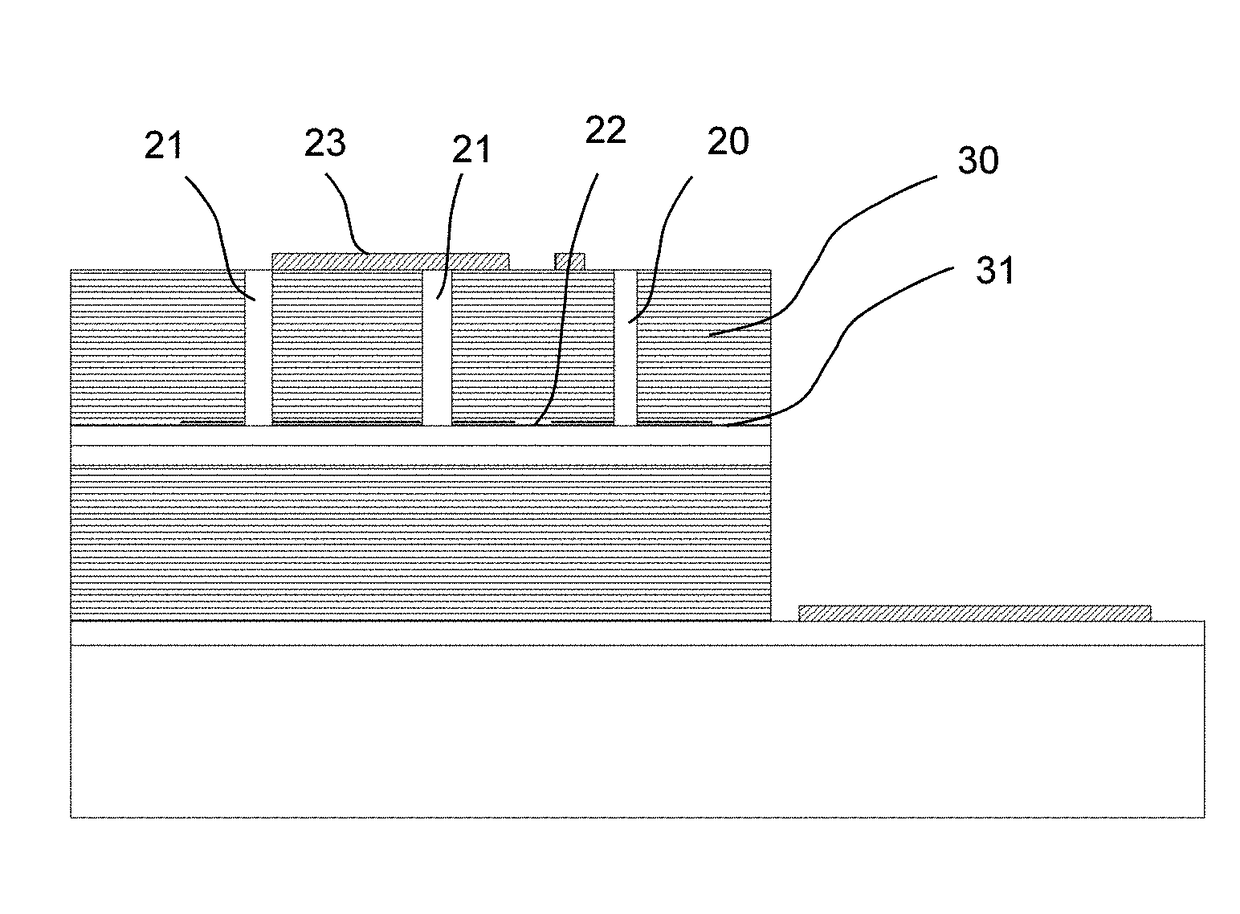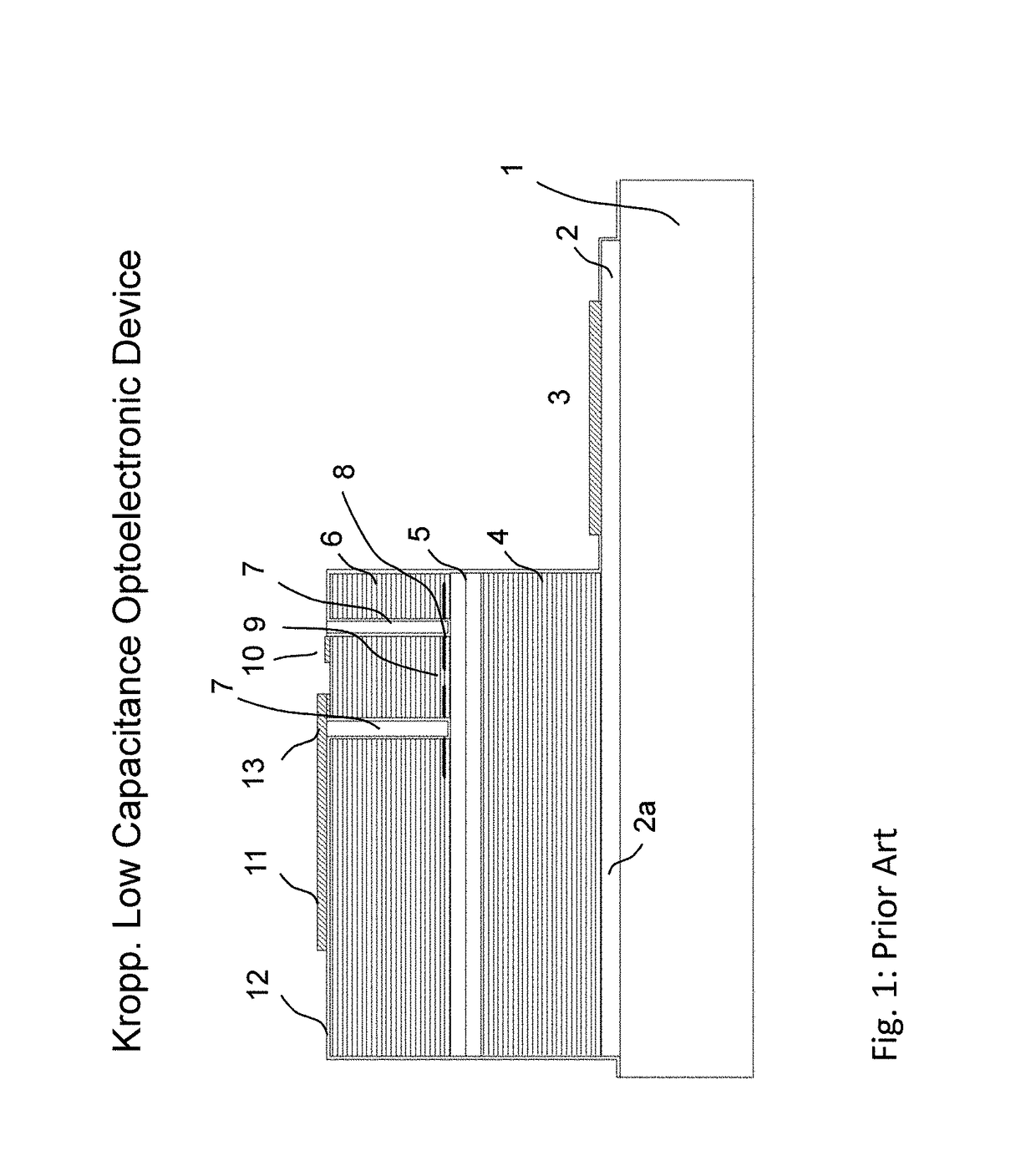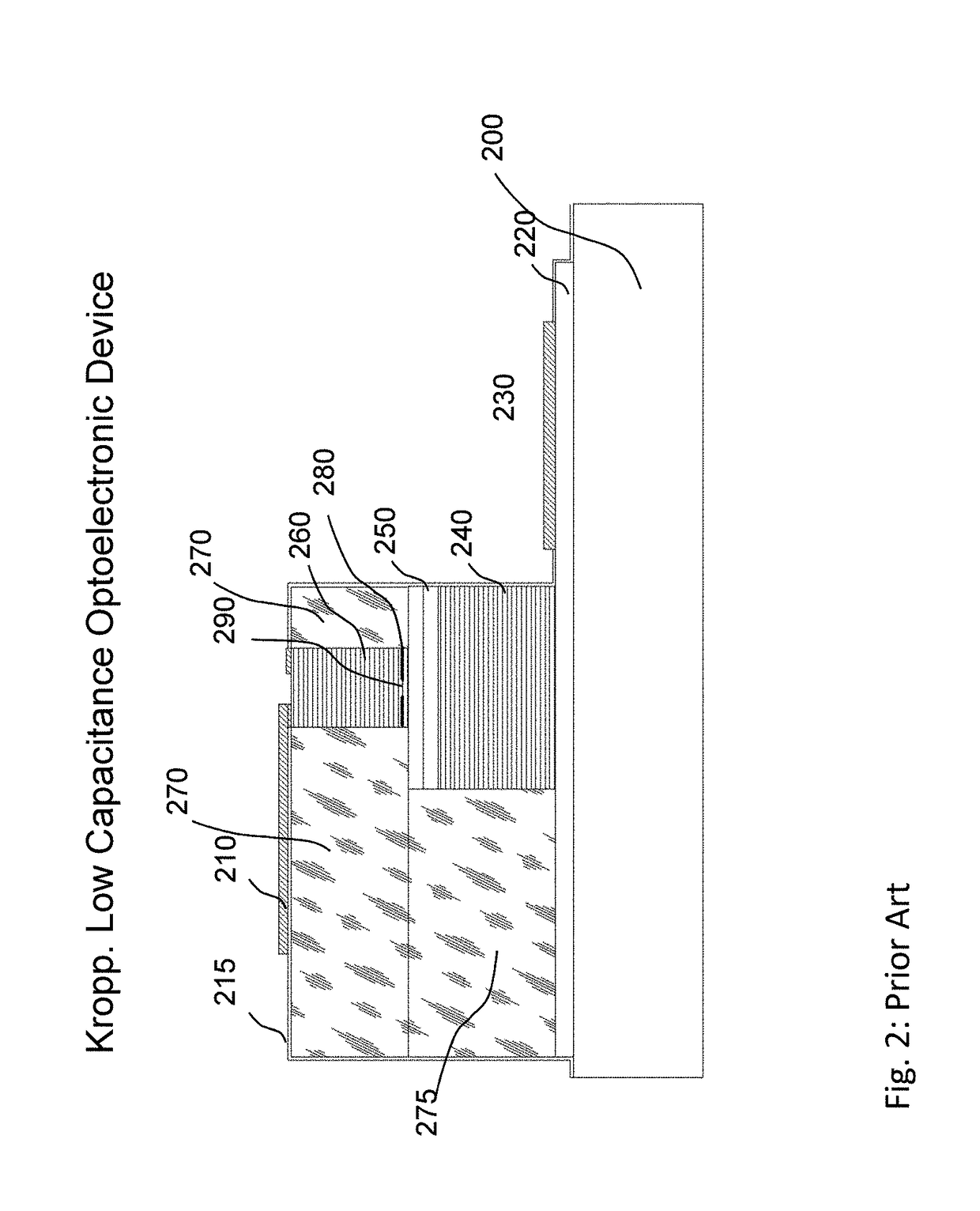Low capacitance optoelectronic device
a low capacitance, optoelectronic device technology, applied in the direction of lasers, semiconductor laser structural details, semiconductor lasers, etc., can solve the problems of parasitic capacitance, introduction of additional capacitance, and limiting the high-speed performance of vcsels and photodiodes, etc., to achieve the effect of low capacitan
- Summary
- Abstract
- Description
- Claims
- Application Information
AI Technical Summary
Benefits of technology
Problems solved by technology
Method used
Image
Examples
Embodiment Construction
[0021]FIGS. 3a and 3b illustrate schematically one embodiment of the present invention. Holes (20) or trenches (21) are etched through the top DBR (30) of a VCSEL. It is even possible to etch further through the p-n junction of a VCSEL. The etching is performed through one or several layers of AlGaAs (31) with a high Aluminum content which are subject to selective oxidation. The oxidation process starts from the etched holes and results in the formation of the oxide layer or oxide layers with a certain extension around the holes or trenches (20a, 21a). The positions of the holes, the shape of the holes and the distance between the holes as well as the extension of oxidation are preferably selected such that the oxide areas generated by neighboring holes overlap (20b) and leaving only some small non-oxidized areas in between (22). These non-oxidized areas will form the apertures for the current flow and for the propagation of light. One may define the oxidized section of the device b...
PUM
 Login to View More
Login to View More Abstract
Description
Claims
Application Information
 Login to View More
Login to View More - R&D
- Intellectual Property
- Life Sciences
- Materials
- Tech Scout
- Unparalleled Data Quality
- Higher Quality Content
- 60% Fewer Hallucinations
Browse by: Latest US Patents, China's latest patents, Technical Efficacy Thesaurus, Application Domain, Technology Topic, Popular Technical Reports.
© 2025 PatSnap. All rights reserved.Legal|Privacy policy|Modern Slavery Act Transparency Statement|Sitemap|About US| Contact US: help@patsnap.com



